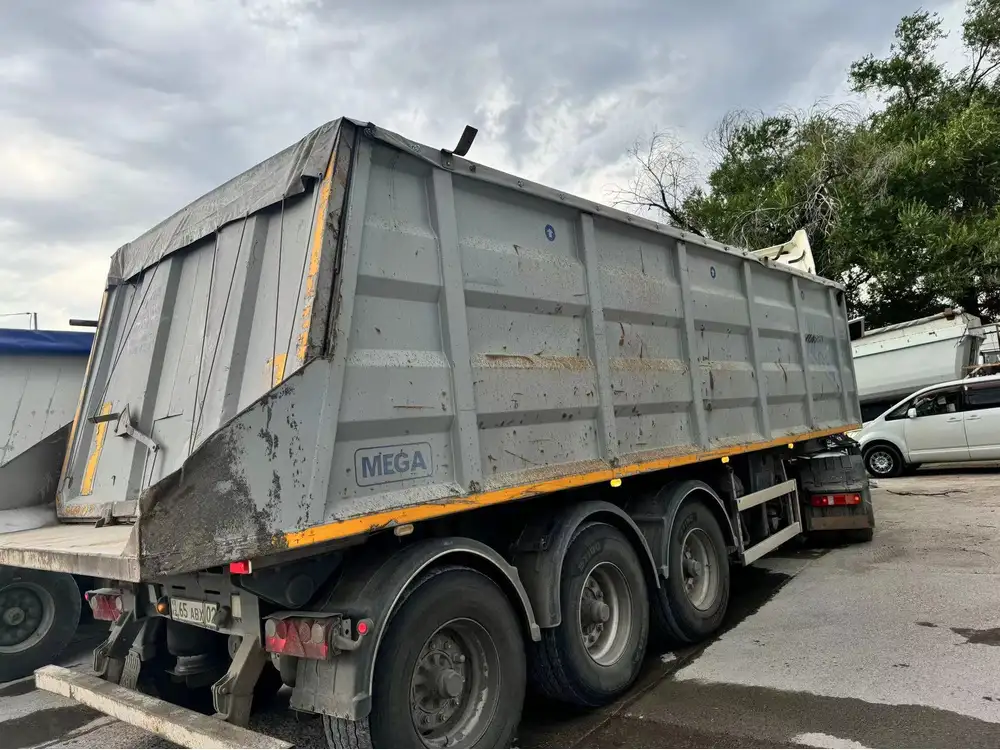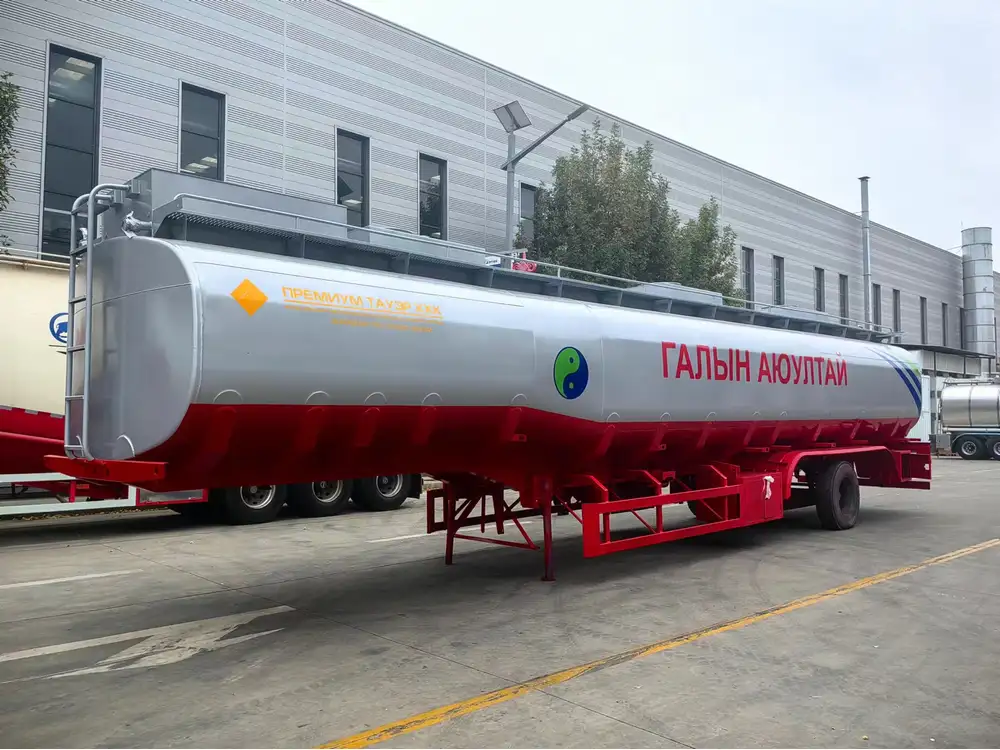When engaging in any heavy lifting, particularly in the realm of trailer usage, understanding the most efficient lift options available for dump trailers is critical. As industry leaders in semi-trailer manufacturing, we prioritize durability and functionality in our recommendations, ensuring that your investment maximizes productivity while guaranteeing safety. This article delves into the intricacies of dump trailer lifts, examining the best options tailored to diverse user needs and operational circumstances.
The Types of Dump Trailer Lifts
Before identifying the best lift for your dump trailer, it’s essential to understand the various types of lifts available. Each lifting mechanism boasts unique characteristics tailored for specific applications. Here’s a breakdown of the most prevalent lift types:
| Lift Type | Description | Best Use Case |
|---|---|---|
| Hydraulic Lift | Utilizes hydraulic cylinders to lift the trailer. | Heavy loads requiring high elevation and control. |
| Electric Lift | Operated via electric motors, often with the convenience of remote control. | General hauling tasks with moderate weight. |
| Pneumatic Lift | Utilizes compressed air for lifting. | Lighter loads and where speed is essential. |
| Manual Lift | Operated by hand crank or lever, usually more labor-intensive. | Low-cost solutions for infrequent use. |
Hydraulic Lifts: The Industry Standard
Hydraulic lifts remain the most preferred choice among dump trailer users, mainly due to their impressive lifting power and stability. A hydraulic system uses pressurized fluid to operate cylinders that lift the trailer bed.

Advantages of Hydraulic Lifts
Strength: Hydraulic systems can lift significantly heavier loads than their electric or pneumatic counterparts, making them indispensable for construction sites and heavy-duty hauling.
Stability: Hydraulic lifts maintain stability under heavy loads, minimizing the risk of tipping or instability, which is paramount for safe operations.
Speed & Efficiency: Hydraulic systems typically offer swift lifting times, allowing quick loading and unloading which enhances overall efficiency.
Durability: With proper maintenance, hydraulic lifts often exhibit remarkable longevity and reliability, ensuring your investment pays off over time.
Ideal Applications
Hydraulic lifts best serve in applications such as:
- Construction: Transporting building materials efficiently.
- Landscaping: Moving soil, stone, and other landscaping materials.
- Agriculture: Carrying heavy loads of agricultural products.
Electric Lifts: Convenience Meets Performance
Electric lifts provide an appealing alternative for users looking for convenience without sacrificing too much power. Activated via electric motors, these lifts may also feature remote control operations, enhancing user experience.

Benefits of Electric Lifts
Ease of Use: The simple operation of electric lifts makes them accessible for numerous operators, minimizing the learning curve.
Low Maintenance: Generally requiring less maintenance than hydraulic systems due to fewer moving parts, electric lifts can be more practical for some users.
Versatile Application: Suitable for various tasks ranging from light hauling to moderate construction work.
Recommended Scenarios for Electric Lifts
Electric lifts excel in applications such as:
- Residential Landscaping: Moving mulch, soil, or plants in residential areas.
- Light Construction: Hauling tools, equipment, or materials for non-intensive tasks.
Pneumatic Lifts: Speed and Lightweight Efficiency
Pneumatic lifts leverage compressed air to achieve lifting motions. They tend to be beneficial in operations where speed is a priority over sheer lifting capability.

Merits of Pneumatic Lifts
Rapid Lifting Times: Ideal for operations needing quick up-and-down movements, such as in packaging or resource distribution.
Lightweight Design: As these systems don’t rely heavily on mechanical components, they can be lighter than hydraulic systems, resulting in more maneuverable trailers.
Cost-Effective: Typically, pneumatic systems involve lower upfront costs, making them suitable for tight budgets.
When to Use Pneumatic Lifts
These lifts are fitting for:
- Packaging Industry: Quick loading and unloading of products.
- Event Setup: Fast rearrangement of materials for temporary installations.
Manual Lifts: The Budget-Friendly Choice
Manual lifts operate through hand-crank mechanisms. While they may not offer the same level of convenience as hydraulic or electric systems, they remain a solid option for specific use cases, especially for infrequent operations.

Key Considerations for Manual Lifts
Affordability: One of the most cost-effective options, allowing budget-conscious users to still utilize dump trailers.
Simplicity: Fewer mechanical components mean reduced chances of breakdowns.
Control: Manual operation potentially allows for more user control over the lifting process, which can be advantageous in delicate operations.
Best Practices for Manual Lifts
Ideal for:
- Occasional Use: These systems work perfectly if you only need to lift loads sporadically.
- Home Projects: Perfect for DIY applications where heavy-duty lifting is unnecessary.
Key Factors to Consider When Choosing a Lift
When selecting the best lift for your dump trailer, consider the following key factors tailored to your specific use case:

Load Capacity
Evaluate the maximum weight you plan to lift. Hydraulic lifts typically provide the highest capacity, ideal for heavy-duty applications, whereas pneumatic and manual lifts serve lighter weights.
Trailer Size and Configuration
The physical dimensions of your dump trailer will influence the lift type you should choose. Ensure the selected lift aligns with the overall design and purpose of your trailer.
Frequency of Use
Regular use demands a more robust and efficient lift, such as hydraulic or electric systems. Meanwhile, infrequent use might warrant more cost-effective options like manual lifts.

Maintenance Needs
Assess the maintenance requirements across different lift types. Hydraulic lifts may need regular oil checks, while electric lifts might require electrical troubleshooting.
Environmental Considerations
In certain environments, such as construction sites exposed to dust or moisture, the durability and preferred sealing of a lift become paramount. Ensure that your lift choice can withstand operational environments.
Recommendations: Making an Informed Decision
Choosing the best lift for your dump trailer involves a multi-faceted approach, considering operational requirements, budget, and user familiarity with each lift type:
For Heavy-Duty Usage: Opt for hydraulic lifts that guarantee substantial lifting power coupled with stability.
For Versatile Operations: Electric lifts provide excellent adaptability with user-friendly interfaces.
For Speed and Efficiency: Pneumatic lifts would serve well in fast-paced environments.
For Budget-Limited Projects: Manual lifts present cost-effective solutions without compromising functionality.

Conclusion: Elevate Your Operations with the Right Dump Trailer Lift
Selecting the best lift for your dump trailer is not merely an accessory choice; it is crucial for operational efficiency, safety, and productivity. By understanding the functions, advantages, and ideal applications of hydraulic, electric, pneumatic, and manual lifts, users can make informed decisions that align perfectly with their needs.
Adopting the right lift type, tailored to individual applications, empowers businesses to enhance their operational capabilities. This transition not only raises productivity levels but also promotes safety and longevity for your equipment. As you scrutinize options available in the market, always consider your heavy lifting needs holistically, ensuring the lifting mechanism not only aligns with your trailer’s specifications but also enhances your overall operational efficacy.
Taking this thorough examination will place you well ahead of competition while solidifying your position in the industry as an informed user and an adept operator of dump trailers. Select wisely, and let your operations soar.



